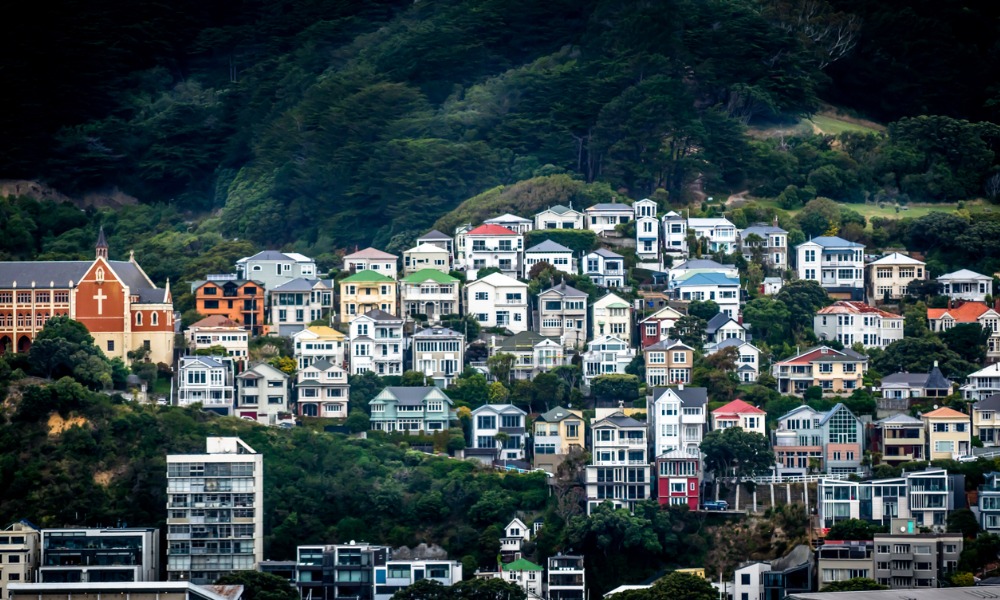Figures also suggest an end of downturn in New Zealand overall

The housing downturn in Auckland, Christchurch, and Wellington appears to have ended, with the latest OneRoof-Valocity House Value Index showing first quarterly increase in prices in New Zealand’s biggest cities in more than a year.
In Auckland, average property value lifted 0.3% to $1.294 million in the three months to Aug. 21, ending a downswing that saw property values decline by more than 18%.
Christchurch’s average property value grew 2% to $758,000 over the quarter, while Canterbury enjoyed an overall growth of 0.9%. The capital’s growth was smaller, at just 0.1% over the quarter, taking the city’s average property value to $981,000.
While the uptick wasn’t strong enough to end the decline in the Wellington region, where the average property value slipped 0.1% over the quarter, the figures suggested that the region as a whole will turn the corner soon.
The figures also indicated that the downturn was over for New Zealand overall, with the average property value across the nation dipping 0.1% over the last three months but showing week-on-week growth since the start of July, the OneRoof-Valocity report showed.
Southland (0.6%), Hawke’s Bay (0.5%), and Gisborne (0.2%) also posted modest increases over the quarter, although the latter regions have been hit by low listings and market volatility due to the impact of Cyclone Gabrielle.
Figures also showed the slump has finally caught up with West Coast, which saw a quarterly decline of 0.9% in average property value over the quarter, the region’s first drop in value since the onset of COVID.
“The figures are a stunning turnaround for the housing market,” said Owen Vaughan, OneRoof editor. “Just three months ago, property values in Auckland were declining at a rate of 3%,” Vaughan said. “Since the start of June, we’ve noticed more buyers at open homes in all three metros and auction rooms spring back to life – unimaginable back in April and May.”
Vaughan said a shortage of available stock drove the increase, with new listings down 13% year-on-year over the last three months and total listings down 1.4% over the same period.
“The drop-off appears to be easing in Auckland, with new listings in the city in the last three months down only 7% on the previous three-month period,” he said. “The decline in new listings in Christchurch and Wellington, though, is higher, and is likely to be putting real pressure on buyers.
“Real estate agencies have been reporting a steady increase in appraisals, which suggests new listings volumes will rise in spring but there still seems to be some hesitation in the market, with agents telling OneRoof that potential vendors are waiting until the election is over before coming to market.”
The quarterly increase in Greater Auckland takes the region’s average property value back to March 2021 levels, with strong results in Auckland’s North Shore and Manukau districts (both up 0.8% over the quarter) and Auckland City (0.5%) driving the overall rise in the region.
The OneRoof-Valocity index also revealed which locations were primed to lead the house price revival. Quarterly value growth has been recorded in more than a third (279) of the 786 suburbs with 20 or more settled sales in the last 12 months, which was more than double the number of suburbs up quarter-on-quarter at the end of July.
“The biggest value increases were in some of the country’s cheapest and far-flung suburbs, but volatility in the value data in these locations – driven by low or patchy sales activity – suggest the market revival will be strongest and firmest in the country’s major metros,” Vaughan said.
“Analysis by OneRoof and Valocity identified 100 major metros suburbs where property values were up in the three months to August 21 – up from just 40 at the end of July. High-end neighbourhoods in Christchurch were enjoying boom-like lifts in their average property value, with Merivale up 6.5% and Sumner up 6.1%, while in Auckland value growth was strongest in Great Barrier Island, Blockhouse Bay and Ostend.”
Helen O’Sullivan, global CEO of real estate for Valocity, said the latest figures suggested prices have largely stabilised, and were even rising in some areas.
“Other data suggests transaction volumes – a key measure of market confidence – are holding their ground,” O’Sullivan said.
“I’m cautiously optimistic that the floor has been reached, in part because transaction volumes have been so low that there must be a level of pent-up demand in the market. However, bank wholesale funding costs are still high and retail rates are creeping up, so there is still a certain level of caution around. I expect the current signals to translate into an increase in transactions – but a return to more ‘normal’ levels of activity rather than an irrational surge.”
Wayne Shum, Valocity senior research analyst, said the increased sale activity was mostly around properties in value range of $600,000 to $800,000, especially in Auckland.
“The sweet spot appears to be in the first-home buyer bracket, although the value lifts in higher-value suburbs, like Remuera and Merivale, suggest some buyers are leaping on the opportunity to buy into desirable neighbourhoods at the bottom of the market,” Shum said.
He warned though that it was too early to consider the recent uptick a “value rebound.”
“The market is still facing some strong headwinds, with high mortgage rates putting a cap on the amount buyers can pay and policy detail from the major parties still light when it comes to housing,” Shum said.
Use the comment section below to tell us how you felt about this.



